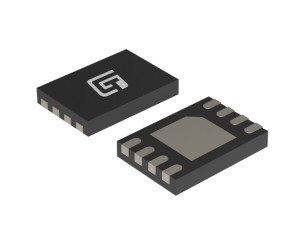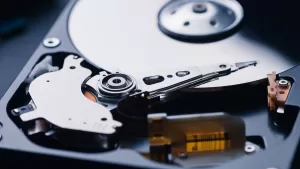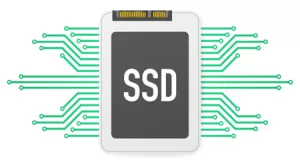
Types of Memory: Primary Memory and Secondary Memory
September 04 2023 
Inquiry
Global electronic component supplier AMPHEO PTY LTD: Rich inventory for one-stop shopping. Inquire easily, and receive fast, customized solutions and quotes.
QUICK RFQ
ADD TO RFQ LIST
This blog will cover primary and secondary memory types and their differences, and delve deeper into ROM and RAM in primary memory, as well as fixed and removable storage in secondary memory.
What is Memory Types?
Memory in a computer is the essential component responsible for storing programs and data. It can be classified into two main types: primary and secondary. Primary memory, made up of semiconductors, consists of two subtypes: Read-Only Memory (ROM) and Random Access Memory (RAM). ROM is a non-volatile memory that contains permanent instructions and data that cannot be altered. It stores critical information such as the computer's initial boot code. On the other hand, RAM is a volatile memory used for temporary data storage during program execution. It allows the CPU to quickly access and manipulate data. Secondary memory, also known as external memory, refers to physical devices used for the permanent storage of programs and data. Examples of secondary memory devices include hard disks, compact discs, and flash drives. Unlike primary memory, secondary memory retains data even when the power is turned off. Overall, memory in a computer system consists of primary memory (ROM and RAM) for temporary storage and secondary memory devices for long-term storage of programs and data. These memory types work together to ensure efficient and reliable data storage and retrieval in a computer.Difference between Primary Memory and Secondary Memory
Since Primary memory and secondary memory are two different types of storage in a computer system, here I also have listed a chart to explicit their differences.|
Feature |
Primary Memory |
Secondary Memory |
|
Volatility |
Volatile: Data is lost when power is off | Non-volatile: Data is retained even when power is off |
|
Speed |
Faster access time and data transfer rate | Slower access time and data transfer rate compared to primary memory |
|
Capacity |
Smaller capacity compared to secondary memory | Larger capacity compared to primary memory |
|
Cost |
Generally more expensive per unit of storage | Generally less expensive per unit of storage |
|
Type |
Usually semiconductor-based (e.g., RAM, ROM) | Typically magnetic or flash-based (e.g., HDD, SSD) |
|
Proximity to CPU |
Located closer to the CPU | Located farther away from the CPU |
|
Function |
Used for storing data and instructions currently being processed by the CPU | Used for long-term storage of data, files, and programs |
|
Examples |
RAM, ROM, Cache memory | Hard disk drives (HDDs), Solid-State Drives (SSDs), USB drives, optical discs |
Types of Primary Memory
Primary memory includes two types: ROM and RAM. In the following parts, I will introduce them deeply.Types of ROM
ROM (Read-Only Memory) is a type of non-volatile memory that is commonly used in computer systems and electronic devices to store permanent data and instructions. There are several types of ROM, each with its characteristics and applications. The main types of ROM include: Mask ROM (MROM): Mask ROM is a type of ROM where the data is permanently programmed during the manufacturing process. The data is stored in the form of a pattern of transistors or diodes on the ROM chip. Once programmed, the data cannot be changed or erased. PROM (Programmable Read-Only Memory): PROM is a type of ROM that can be programmed by the user after the chip is manufactured. It is programmed using a device called a PROM programmer, which applies high voltage to specific memory cells to store the desired data. Once programmed, the data remains permanently stored and cannot be changed. EPROM (Erasable Programmable Read-Only Memory): EPROM is a type of ROM that can be erased and reprogrammed multiple times. It uses a special type of memory cell that can be erased by exposure to ultraviolet light. To reprogram the EPROM, it needs to be removed from the circuit and exposed to UV light in an eraser device. Once erased, new data can be programmed into the EPROM using a programming device. EEPROM (Electrically Erasable Programmable Read-Only Memory): EEPROM is similar to EPROM but can be erased and reprogrammed electrically, without the need for UV light exposure. It can be erased and reprogrammed while remaining in the circuit, making it more convenient for updating firmware or data in electronic devices.
- Flash Memory: Flash memory is a type of EEPROM that allows for faster erasing and reprogramming. It is commonly used in devices such as USB drives, memory cards, and solid-state drives (SSDs). Flash memory can be erased and reprogrammed in blocks, making it more efficient for large-scale data storage.
Types of RAM
RAM (Random Access Memory) is a type of volatile memory that is used in computer systems and electronic devices to temporarily store data that is actively being used by the processor. There are several types of RAM, each with its characteristics and applications. The main types of RAM include: Static RAM (SRAM): SRAM is a type of RAM that uses flip-flops to store each bit of data. It is faster and more expensive than other types of RAM but requires more power and has a lower storage density. SRAM is commonly used in cache memory, where fast access to frequently used data is crucial. SRAM holds vital significance in an FPGA as it serves as the configuration memory, storing the programming information that defines the behavior of the device, while CMOS is responsible for implementing the digital logic circuits within the FPGA. Dynamic RAM (DRAM): DRAM is a type of RAM that stores each bit of data in a capacitor within a memory cell. It requires constant refreshing to maintain the stored data, which leads to a slower access time compared to SRAM. However, DRAM offers higher storage density and is more cost-effective. It is commonly used as the main memory in computer systems. Synchronous DRAM (SDRAM): SDRAM is a type of DRAM that is synchronized with the system bus speed. It operates at higher speeds than traditional DRAM and is used in applications that require fast and synchronized access to memory, such as graphics processing and multimedia systems. SDRAM is commonly found in desktop and laptop computers. DDR SDRAM (Double Data Rate SDRAM): DDR SDRAM is an advanced version of SDRAM that allows for data to be transferred on both the rising and falling edges of the clock signal, effectively doubling the data transfer rate. DDR SDRAM has multiple generations, such as DDR2, DDR3, and DDR4, each offering increased speed and efficiency. It is widely used in modern computer systems. RDRAM (Rambus DRAM): RDRAM is a type of RAM developed by Rambus Inc. It uses a high-speed serial interface to transfer data between memory and the processor. RDRAM was popular in the late 1990s and early 2000s but has been largely replaced by other types of RAM due to its higher cost and limited compatibility. LPDDR (Low Power DDR): LPDDR is a type of DRAM designed for low-power consumption in mobile devices such as smartphones and tablets. It provides high-speed data transfer while minimizing power usage, extending the battery life of mobile devices.Difference between ROM and RAM
ROM and RAM are two types of Primary memory. To understand their difference better, I list another chart for your reference.|
Feature |
ROM (Read-Only Memory) |
RAM (Random-Access Memory) |
|
Volatility |
Non-volatile: Retains data even when power is off | Volatile: Loses data when power is off |
|
Read/Write |
Read-only: Data can only be read | Read and write: Data can be both read from and written to |
|
Data Retention |
Permanent: Data is retained indefinitely | Temporary: Data is stored as long as power is supplied |
|
Capacity |
Typically larger capacity | Typically smaller capacity compared to ROM |
|
Access Time |
Generally slower access time | Generally faster access time |
|
Cost |
Relatively lower cost per unit of memory | Relatively higher cost per unit of memory |
|
Usage |
Used for storing firmware, software, and permanent data | Used for storing data during program execution |
Types of Secondary Memory
The secondary memory can be classified by fixed storage and removable storage. Let’s explore them further.Types of Fixed Storage
Fixed storage, also known as non-volatile memory or secondary storage, refers to the long-term storage of data in computer systems. Unlike RAM, which is volatile and loses data when the power is turned off, fixed storage retains data even when the power is removed. There are several types of fixed storage commonly used in computer systems. Let's explore some of the main types: Hard Disk Drives (HDD): HDDs have been a popular form of fixed storage for many years. They consist of spinning magnetic platters and read/write heads that move across the platters to access data. HDDs offer high storage capacity, with terabytes of space available, and are relatively affordable. However, they are slower compared to other storage technologies and can be more prone to mechanical failures.

Types of Removable Storage
Removable storage refers to storage devices that can be easily detached from a computer system and used on multiple devices. These devices provide a convenient way to store and transfer data between different systems. Here are some common types of removable storage: USB Flash Drives: USB flash drives, also known as thumb drives or jump drives, are one of the most popular types of removable storage. They are small, portable, and connect to a computer's USB port. USB flash drives use flash memory technology to store data and are widely used for transferring files, creating backups, and carrying data on the go. Memory Cards: Memory cards are removable storage devices commonly used in cameras, smartphones, tablets, and other portable devices. They come in various formats, such as Secure Digital (SD) cards, microSD cards, CompactFlash cards, and Memory Stick cards. Memory cards offer expandable storage and are used to store photos, videos, music, and other files. External Hard Drives: External hard drives are portable storage devices that connect to a computer via USB, Thunderbolt, or other interfaces. They typically consist of a traditional hard disk drive (HDD) or a solid-state drive (SSD) enclosed in an external housing. External hard drives provide high-capacity storage and are commonly used for backups, data transfer, and additional storage space. Optical Discs: Optical discs, such as CDs, DVDs, and Blu-ray discs, are removable storage media that use optical technology to read and write data. They are commonly used for storing software, music, movies, and data backups. However, with the rise of digital distribution, optical discs have become less prevalent. Magnetic Tape: Magnetic tape is a removable storage medium that uses magnetic recording to store data. It consists of a thin tape coated with a magnetic substance and is commonly used for long-term archival storage of large amounts of data. Magnetic tape is often used in enterprise backup solutions and data centers due to its high capacity and cost-effectiveness. Zip Drives: Zip drives were popular in the past but have become less common today. They were removable storage devices that used zip disks, which were similar to floppy disks but offered higher storage capacity. Zip drives were used for data backup, file transfer, and portable storage.Why do We Need Secondary Memory?
Since the advent of Primary memory, why do we need secondary memory? Have you raised this question? Secondary memory is indispensable. While primary memory, such as RAM, plays a crucial role in facilitating immediate data access, secondary memory serves a distinct purpose by providing long-term storage and a host of other essential functionalities. Let’s explore the significance of secondary memory and highlight the reasons why it is a vital component in today's computing landscape. One of the primary reasons we need secondary memory is its ability to offer long-term storage for data, files, and programs. Unlike primary memory, which is volatile and loses its contents when power is turned off, secondary memory is non-volatile, ensuring that data is retained even without a power source. This permanence allows users to store and access their information across multiple computing sessions, providing a reliable and consistent data repository. Secondary memory provides a significantly larger storage capacity compared to primary memory. With the exponential growth of data in today's digital age, the ability to store vast amounts of information is crucial. Secondary storage devices, such as hard disk drives (HDDs) or solid-state drives (SSDs), can hold terabytes or even petabytes of data, enabling users to preserve and manage their ever-increasing digital assets effectively. Secondary memory plays a pivotal role in data persistence and backup. It allows users to save their files, documents, and critical data securely and reliably. By regularly backing up data to secondary storage devices, individuals and businesses can safeguard against data loss caused by hardware failures, system crashes, or accidental deletion. Secondary memory acts as a safety net, ensuring that valuable data remains intact and recoverable. Secondary memory facilitates seamless data sharing and portability. Files and data stored on secondary storage devices can be effortlessly transferred, copied, or shared between different computers or devices. Whether it's via USB drives, external hard drives, or cloud storage services, secondary memory enables users to transport their data conveniently and access it from various locations, promoting collaboration and productivity. Secondary memory serves as an essential tool for archiving and long-term data retention. It provides a means to store data that is not frequently accessed but may be required for reference or compliance purposes in the future. Archival storage solutions, including tape drives or offline storage systems, offer cost-effective options for storing vast volumes of data over extended periods, ensuring data integrity and accessibility when needed. Secondary memory plays a vital role in offloading primary memory when it becomes overwhelmed. As primary memory, such as RAM, has limited capacity, secondary memory provides a temporary storage solution by moving or swapping data from primary memory to secondary storage. This process, known as virtual memory, allows systems to handle larger datasets and run more resource-intensive applications, optimizing overall system performance. All in all, secondary memory is essential in computing due to its ability to provide long-term storage, expansive capacity, data persistence, backup and recovery, data sharing and portability, archival capabilities, and offloading of primary memory. It complements primary memory, ensuring efficient management and accessibility of data. As technology advances and data volumes increase, secondary memory will remain critical in meeting storage needs.Conclusion
In conclusion, understanding the different types of memory is essential in comprehending how computer systems function and how data is managed. Primary memory provides quick access to data being actively processed, while secondary memory offers a larger capacity for persistent storage. By recognizing the distinctions between these memory types, we can optimize system performance, ensure data integrity, and make informed decisions regarding data storage and management. Embracing the diverse capabilities of various memory types empowers us to harness the full potential of modern computing technologies.Related Articles
Populer Posts
